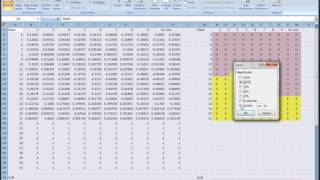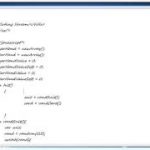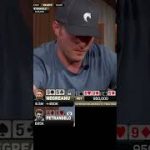Blackjack Strategy Video Source & Information:
Here I show how to create the blackjack basic strategy in Excel from a blank spreadsheet.
Googledocs – https://drive.google.com/file/d/0B2R98Qfvr8GldVlUZVJFeHVLZ1U/edit?usp=sharing
Check my website for blackjack rules and strategies : https://wizardofodds.com/games/blackjack/
Source: YouTube








I can never find stay soft 17 games. Willing to give in on that rule for a 3:2 payout on blackjack and low minimums. Can you do hit soft 17 games?
The dealer has a higher probality of negative 1 with a bust. A dealer can win on a bust if the player busts first. Only the player is a 100% negative on a bust.
Hi, Do you have the spreadsheet for six decks? I will be very thankful for your help.
Thanks Again
why are all the possible totals upto 31 ?
You are a genius!
This is approximately what I did. Only I used matlab, and as a result, it doesn't suck. Since I can just put in a truecount and it alters the card probability distribution, and it naturally can account for more things, like recursive splits up to 4. Because my goal wasn't to verify basic strategy, it was to produce an advanced strategy that would tell me what to do as the shoe became richer or poorer in high cards, and the thresholds between one decision and another. The point of what I was doing was different than yours. You have to be a little bit careful about the results though, for instance, hitting or standing 16 against 10, you really have to pay attention to the exact cards that comprise it…. if it's a 10 and a 6 or a 9 and a 7, since the 6 or 7 are being counted as low cards even though as far as a 16 is concerned, they're both bust cards, you really should subtract about 1.6 from the count before using it to decide what to do with that hand. So the results say, hit if count<.08 but in fact it should in general be a little higher than that since the cards comprising the hand you already have which you used to produce the current value of the count, probably contains cards that are being counted as low cards by the counting vector, yet are bust cards and as far as a 16 is concerned, are really high cards. There is an even bigger effect in deciding when to take insurance. The insurance threshold using 2-6 against 10/A is 3.3333, and using 2-7 against 9-A is 4.0000, but in fact it should be more like 2.8 in a 2-deck game, because you've counted the ace you already see in the dealer's hand as a high card, but it having emerged certainly doesn't decrease the probability of a 10 being the hole card, in fact it increases it, but you subtracted 1 instead of adding 1 to the count when you saw it. And of course in a 6-deck game it would be 3 times closer to 4.0000, so more like 3.6 instead of 2.8.
I have used your wizardofodds website as a reference, but some of the things you have up on basic strategy are certainly wrong. For instance, you think I should split 6's against a 7, or split 7's against an 8, in a 2-deck game. NOPE. Wrong. I tested EVERY possible hand with my program to find all decision thresholds, and there is NO count threshold, positive or negative, at which you should split 6's against a 7 or 7's against an 8, you should hit them both. And I tested truecounts up to like 12 and down to -12. Oddly enough, if the truecount gets over 3.5, you SHOULD split 2's against an 8 though. That sounds crazy, and I was scratching my head over that result, and surely if it gets even higher, you shouldn't, because you'd be all but guaranteed to lose both hands if everything left in the shoe is 9's, 10's and A's if you had 2 against 8 (you'd need a 9 and a 10 or 2 9's), but I couldn't find a 2nd threshold of count where you should stop doing it again even up to a truecount of 15.
I tried to make alternate versions of the program that didn't use infinite decks and could account for the exact cards and see how things differ when the card distribution can vary in the middle of a hand, but found the calculation would take far too long (years) so I dropped that. Nevertheless I'm still confident you shouldn't split 7's against an 8, ever.
Hi, Michael, It is very nice blackjack excel project you have done. May I know why there is 31, not 35, 41 etc.? Thanks. Again, excellent!!
hi mike.. you have for spanish 21 calculation??
Hello, where I play you can only double with 9-10-11 hard or soft. does this change the math on "split if double after split is allowed, otherwise hit"? Or splitting is only if you can double with any number?
6 decks
Dealer has never a face down card
Dealer stands on soft 17
Double on any first two cards allowed
if they are 9-10-11
Double after split allowed
surrender allowed
but not vs A
Player may re-split to four hands, including aces
Thanks
Awesome!!